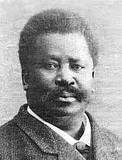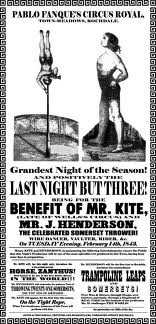 |
| Aileen Parker (left) with Rosemary Webb-Rehill c 1969 in Oliver. |
In June 1967, a group of us (mainly I thinking from Mortimer Seniors in the ‘New’ block) were invited one evening to the Headmaster’s cottage the head’s daughter – Aileen Parker. The head – George Parker and his wife were obviously out. I can’t remember who went but there was about half a dozen including myself and Ralph Aldhous, both of us in a fifth and final year and coming up to leaving the school not long after this.
 |
| Headmaster’s Cottage |
Aileen was a great hostess, and food and snacks were made available. It stood out as a pleasant evening because it was so different to being in the dorms but there was another reason it was memorable. Aileen had just bought the newly released Sergeant Pepper album by the Beatles. As it was newly released, none of us had heard it before. The Beatles had been pushing the boundaries of their music for the last couple of years and although it built on their earlier developments in Rubber Soul and Revolver, this was quite something else at the time and we sat chatting and eating while listening to these weird and wonderful new sounds.
I was the only one with a portable record player in the new block at the time, and soon others had the album and would play it on my record player. First thing in the morning someone would put the album on my record player and blast Good Morning Good Morning – with it Cockcrow beginning. no one could sleep through that and the angst-y Lennon social commentary that followed! In the wake of Dylan, popular music lyrics were no longer exclusively about ‘boy meets girl‘, there was a growing subtext of social criticism and rebellion.
| “Going to work don’t want to go feeling low down Heading for home you start to roam then you’re in town Everybody knows there’s nothing doing Everything is closed it’s like a ruin Everyone you see is half asleep. And you’re on your own you’re in the street Good morning, good morning…” Of course the album was played also after staff-room raids and midnight parties, which were easier to arrange in the ‘New’ block as we were in smaller rooms and the staff quarters were further away. It’s hard to imagine now how revolutionary that album was back then after all the concept albums and innovation that followed but all of the sounds were created in the studio. Now of course the sounds can be created digitally without much work by synthesizers or sampling. In George Martin, they had a producer who had long experience of producing comedy records with acts like the Goons and all the sound effects associated with them. Among the gems on this, then, new album was She’s Leaving Home beautifully orchestrated by Mike Leander who worked on Decca tracks for Marianne Faithful as George Martin wasn’t available for that session in March 1967. In The Beatles Complete Recording Sessions by Mark Lewisohn we learn that the score called for 4 violins, 2 cellos, a double bass and a harp. There were no Beatle instrumental overdubs, only the lead voice of Paul and John’s backing voice which were heard but double tracked to sound like four voices. Beautiful as the music is, the lyrics are often overlooked. McCartney, according to A Hard Day’s Write by Steve Turner derived his inspiration from reportage in the Daily Mail on February 27th 1967 and transformed that reportage in to a highly visual and video-phonic lyric that, in contrast to the newspaper article, ‘shows not tells‘. (An update on the story appeared in the Daily Mail in May 2008 – http://www.dailymail.co.uk/femail/article-567024/Shes-leaving-home—The-woman-inspired-Beatles-classic-quit-Spanish-house-built-illegally.html
The reportage begins “The Father of 17 old Melanie Coe, the school girl who had everything, spent yesterday searching for her in London and Brighton……she had a wardrobe full of clothes but took only those she was wearing…..she left her cheque book and drew no money from her account” but McCartney with Lennon transforms the story from the past tense into this very evocative lyric. It starts with a time-frame – “Wednesday morning at 5am” and paints a step by step picture. You see her closing the bedroom door. McCartney doesn’t tell us she’s upset but shows it via the image of her ‘clutching her handkerchief and evokes the senses with little touches like “Father snores as..“ While I was showing that to John, he was doing the Greek chorus, the parents’ view: ‘We gave her most of our lives, we gave her everything money could buy.’ I think that may have been in the runaway story, it might have been a quote from the parents. Then there’s the famous little line about a man from the motor trade; people have since said that was Terry Doran, who was a friend who worked in a car showroom, but it was just fiction, like the sea captain in “Yellow Submarine”, they weren’t real people.”
Lennon bought the poster that inspired the song in an antique shop in Sevenoaks in Kent while making a promotional film for Strawberry Fields in January 1967.
I put the fuller story on another site although the video on there no longer works – you can read here
|


+(1).jpg)
.jpg)
Heard it first in A'dam in a student club in the summer of 1968 and pranced around on the dance floor, instead of late night finals cramming
I only saw the cover, when I met Ralph, but lost it got lost along the line.
Well thanks to Aileen we got to hear it hot off the press. Apart from that, I was lucky in that I had the only portable record player at the school at that time and didn't need to buy loads of records as everyone brought them to me to play – Martin Lumley used to bring the latest stones or Dylan albums and we'd talk about music and then i got a reel to reel for taping the latest sounds. The record player had a built in radio too.